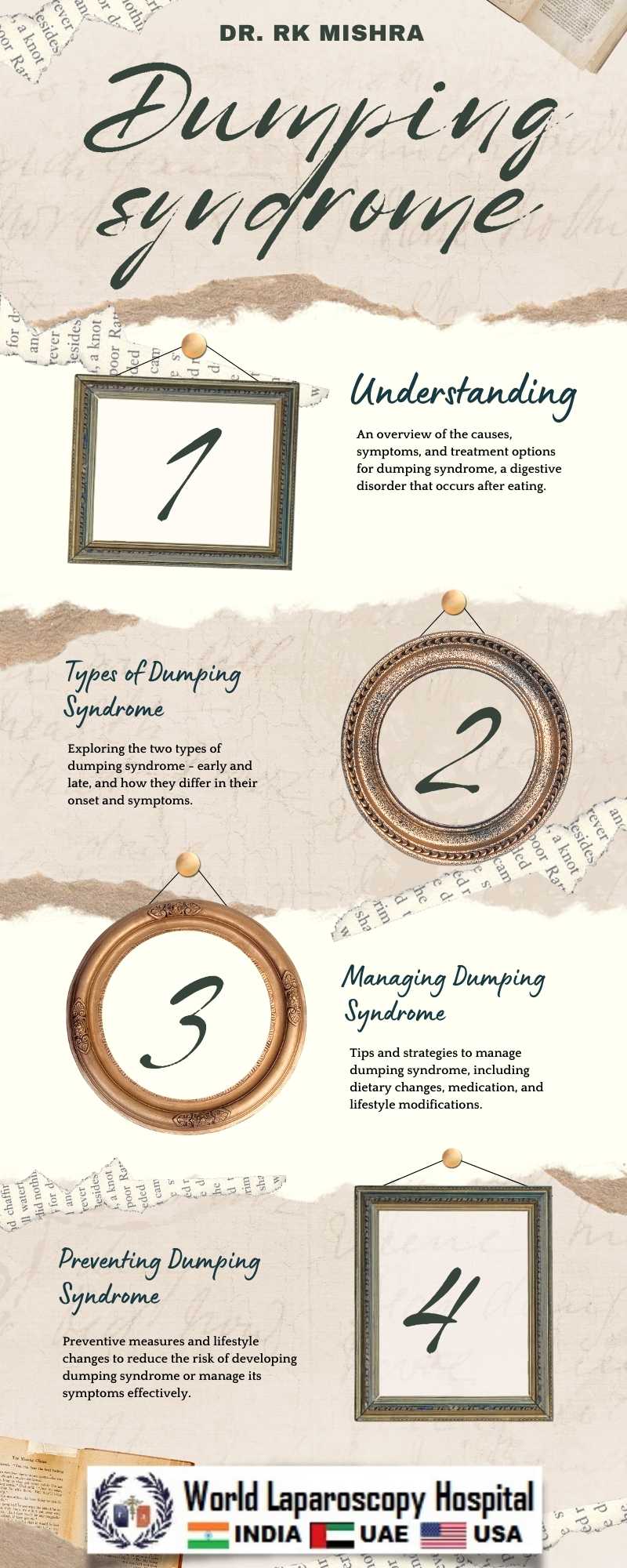Dumping syndrome: Rapid gastric emptying, often after surgery to remove or bypass part of the stomach
Dumping syndrome is a condition characterized by rapid gastric emptying, often occurring after surgery to remove or bypass part of the stomach. This condition can lead to a variety of symptoms, including nausea, vomiting, bloating, abdominal cramps, diarrhea, and lightheadedness. It typically occurs after consuming meals high in sugar or simple carbohydrates, which are rapidly absorbed into the bloodstream, causing a rapid rise in blood sugar levels.

There are two types of dumping syndrome: early dumping syndrome and late dumping syndrome. Early dumping syndrome occurs within 30 minutes to an hour after eating and is characterized by symptoms such as nausea, vomiting, abdominal cramps, diarrhea, and lightheadedness. Late dumping syndrome, on the other hand, occurs 1 to 3 hours after eating and is characterized by symptoms such as weakness, sweating, dizziness, and palpitations.
Dumping syndrome is most commonly associated with gastric surgery, such as gastric bypass surgery or sleeve gastrectomy, which are often performed to treat obesity or other gastrointestinal conditions. These surgeries involve removing or bypassing part of the stomach, which can disrupt the normal digestive process and lead to rapid gastric emptying.
Treatment for dumping syndrome typically involves dietary changes, such as eating smaller, more frequent meals that are low in sugar and simple carbohydrates. Patients are also advised to avoid lying down immediately after eating and to drink fluids between meals rather than with meals. In some cases, medications may be prescribed to help control symptoms.
Conclusion:
Dumping syndrome is a condition characterized by rapid gastric emptying, often after surgery to remove or bypass part of the stomach. It can lead to a variety of symptoms, including nausea, vomiting, bloating, abdominal cramps, diarrhea, and lightheadedness. Treatment typically involves dietary changes and, in some cases, medications.

There are two types of dumping syndrome: early dumping syndrome and late dumping syndrome. Early dumping syndrome occurs within 30 minutes to an hour after eating and is characterized by symptoms such as nausea, vomiting, abdominal cramps, diarrhea, and lightheadedness. Late dumping syndrome, on the other hand, occurs 1 to 3 hours after eating and is characterized by symptoms such as weakness, sweating, dizziness, and palpitations.
Dumping syndrome is most commonly associated with gastric surgery, such as gastric bypass surgery or sleeve gastrectomy, which are often performed to treat obesity or other gastrointestinal conditions. These surgeries involve removing or bypassing part of the stomach, which can disrupt the normal digestive process and lead to rapid gastric emptying.
Treatment for dumping syndrome typically involves dietary changes, such as eating smaller, more frequent meals that are low in sugar and simple carbohydrates. Patients are also advised to avoid lying down immediately after eating and to drink fluids between meals rather than with meals. In some cases, medications may be prescribed to help control symptoms.
Conclusion:
Dumping syndrome is a condition characterized by rapid gastric emptying, often after surgery to remove or bypass part of the stomach. It can lead to a variety of symptoms, including nausea, vomiting, bloating, abdominal cramps, diarrhea, and lightheadedness. Treatment typically involves dietary changes and, in some cases, medications.
1 COMMENTS
Dr. Ranvir Singh
#1
Feb 20th, 2024 7:47 pm
Dumping syndrome, linked to swift gastric emptying post-stomach surgery, manifests diverse symptoms like nausea and diarrhea. Treatment, often dietary adjustments and medications, aims to alleviate discomfort and enhance patients' postoperative quality of life.
| Older Post | Home | Newer Post |

